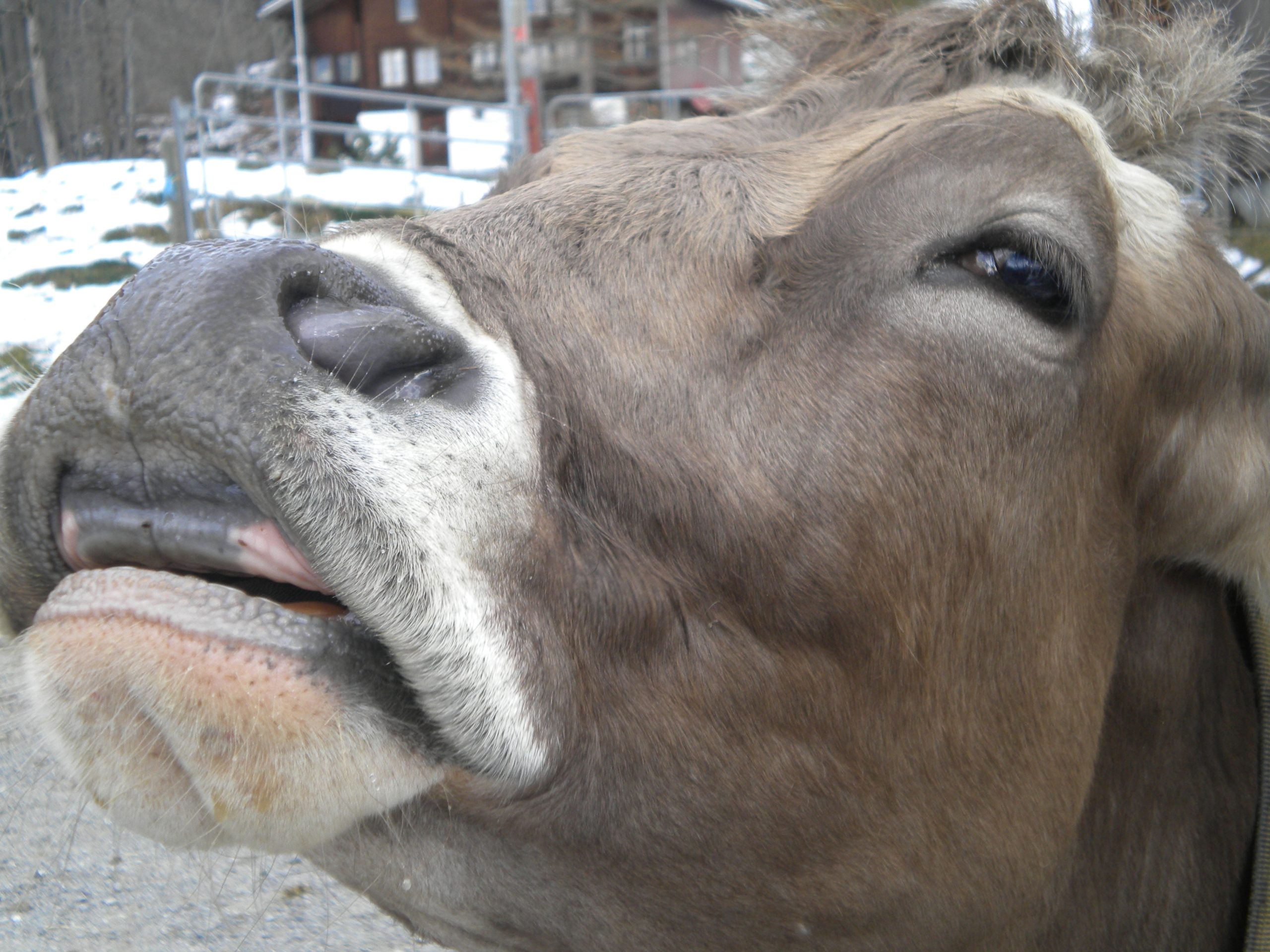Cow signals
Sniffing
Problem/Image content:
This cow is sniffing the vulva of a member of a same breed female.
What is (not) working correctly?
The increased reciprocal interest is due to hormonal changes.
Causes
Smelling the vulva of other cows is often a sign that the cow is pre-oestrus.
Objective
Note and document such advance oestrus signals so that oestrus is not missed.
Measures
Continue to monitor the animal so as not to miss oestrus. Inseminate with a suitable rest period approx. 12-24 hours after main start to oestrus (standing reflex).
Flehmen
Problem/Image content:
Curling up the upper lip with the neck stretched out is described as flehmen.
What is (not) working correctly?
Flehmen enables the cow to smell the scents (pheromones) of same breed females.
Causes
This behaviour is often seen in pre-oestrus. The cow behaves in this way due to hormonal changes.
Objective
Good oestrus monitoring enables the farmer to find as many animals in oestrus as possible. This contributes greatly to a good insemination success.
Measures
Continue to monitor the animal so as not to miss oestrus. Inseminate with a suitable rest period approx. 12-24 hours after main start to oestrus (standing reflex).
Standing reflex
Problem/Image content:
The animal being mounted shows the standing reflex, i.e. she tolerates the mounting, she “stands”.
What is (not) working correctly?
The standing reflex is the behaviour of a cow which enables a bull to mount the cow. It is a behaviour that the cow only shows in the main oestrus period. But the mounting cow may also be in oestrus, or about to be.
Causes
Due to hormonal changes (higher oestrogen level in the blood) the cow changes her behaviour. She remains standing.
Objective
Formulate the husbandry and environment so that the cows can live out their oestrus behaviour and show it. Document the heat behaviour in every case.
Measures
Insemination about 12-24 hours after the start of main oestrus (standing reflex) according to morning-afternoon-morning rule with appropriate rest time.
Oestrus mucus
Problem/Image content:
Clear, spinnable, (stringy) mucus from the vulva
What is (not) working correctly?
Oestrus mucus is a clear signal of oestrus.
Causes
The oestrus hormone oestrogen is responsible for the formation of oestrus mucus. This cow is in the main oestrus period.
Objective
Monitor and document all oestrus symptoms.
Measures
Insemination after about 12-24 hours according to morning-afternoon-morning rule with appropriate rest time.
Bleeding
Problem/Image content:
A heifer presents a bloody discharge from the vagina.
What is (not) working correctly?
This animal started oestrus about two days before this blood loss.
Causes
During oestrus the uterus is supplied with more blood due to the oestrogen influence (oestrus hormone). In post-oestrus there are low levels of bleeding in the small blood vessels called capillaries in the mucus and muscles and this blood is mixed with the post-oestrus mucus from the cervix and vagina. The bloody mucus is then visible on the hairs of the vulva, on the underside of the tail in the area of the ischial tuberosities and the back thigh. “Bleeding” occurs more often with heifers than with cows.
Warning:
- Bleeding does not necessarily mean a successful ovulation but is generally an indication of a good functioning cycle.
- The mixing of blood in the post-oestrus mucus does not indicate the success of a previous mounting or insemination.
Objective
Daily oestrus monitoring also includes controlling the vulva tail part for mucus and blood traces, preferably when animals are lying down. With animals in silent oestrus the farmer has a reference point to the phase of the cycle and can then intensity the oestrus monitoring 18-20 days later.
Measures
Always document bleeding as such and intensify oestrus monitoring accordingly after 18-20 days.
Head laying
Problem/Image content:
This animal lays the head on the back of a same breed female.
What is (not) working correctly?
The increased reciprocal interest is due to hormonal changes.
Causes
Behaviour change due to hormonal change in early oestrus (before mounting attempt).
Objective
Note and document such advance oestrus signals so that oestrus is not missed.
Measures
Continue to monitor the animal so as not to miss oestrus. Inseminate with a suitable rest period approx. 12-24 hours after main start or oestrus (standing reflex).
All texts and pictures come from our partner site www.la-vache-fertile.ch (french)- you will find more information an tips about fertility there.





